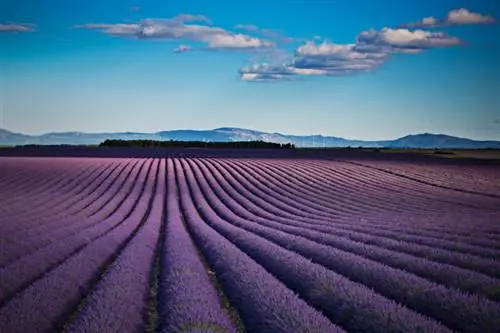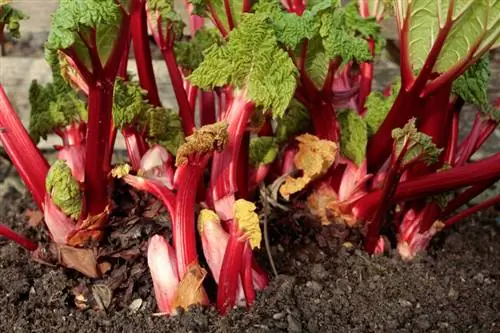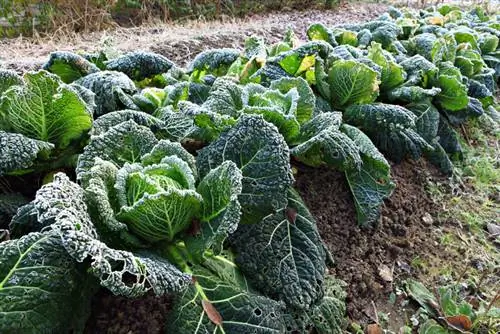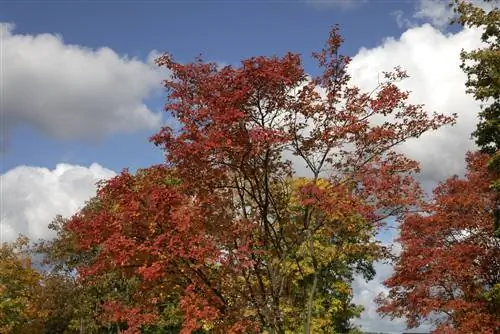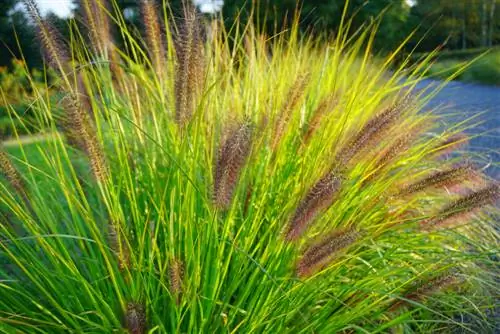- Author admin [email protected].
- Public 2023-12-16 16:46.
- Last modified 2025-01-23 11:20.
Great or Real Speik, Lavengel or Lafengel, Spikenard, Spikanard, Zöpfliblumen or Brainwort, Spitznard, Nervkräutlein, Spieke or Spika Blossom, the popular scented shrub Lavender is popularly known by many names. What is less known, however, is that the mostly blue to purple flowering shrub is available in a variety of species and varieties. Here you will find a list of the most important types of lavender.
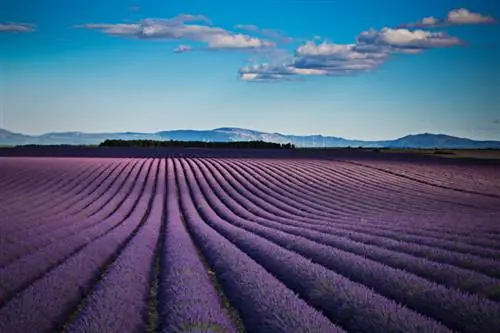
What types of lavender are there?
The most important lavender varieties are true lavender (Lavandula angustifolia), tooth lavender (Lavandula dentata), Provence lavender (Lavandula x intermedia), Speik lavender (Lavandula latifolia) and crested lavender (Lavandula stoechas). They vary in size, flower color, aroma and cold resistance.
True lavender (Lavandula angustifolia)
The real lavender, a silver-gray fragrant shrub, is quite undemanding to cultivate. It loves dry, slightly calcareous soil and needs lots of sun. The bushy-growing plant also tolerates harsh climates quite well, so that outdoor cultivation is generally possible, especially in wine-growing regions - provided of course that there is appropriate winter protection. Real lavender is available in numerous varieties with different flower colors. In addition to the classic lavender blue ones, there are also varieties with strong blue, violet, pink or even white flowers.
Tooth lavender (Lavandula dentata)
The tooth lavender grows slightly taller than the real lavender. The heavily bushy and branched subshrub can grow to a height of between 50 and 90 centimeters. Its flowers, which occur between June and August, have a distinctive light blue color. Just like the other types of lavender, tooth lavender also needs good winter protection in harsh climates. The pots should be kept bright and cool over the winter. This species is very suitable for pot culture. The young leaves are only suitable to a limited extent and in small quantities as a spice, while dried flowers are wonderful for filling scented sachets, for potpourris and as a garnish for desserts. The tooth lavender owes its name to the peculiar toothing of its leaves.
Provence lavender (Lavandula x intermedia)
The Provence lavender with its typical scent and very intense aroma is used like real lavender. It is a cross between different types of lavender, which are grown in numerous varieties, mainly in southern France. The plants grow to a height of between 30 and 60 centimeters and bloom from June to August in a striking blue-purple color. Provence lavender is very warm-loving and therefore needs good winter protection. The flower stalks should only be harvested after they have fully bloomed.
Varieties of Provence lavender
- Alba (large, vigorous, white flowers)
- Bleu de Collines (compact, blooming, intensely fragrant)
- Blue Dwarf (compact, long-stemmed, well suited as a hedge)
- Dutch (long flower stalks, violet-blue flowers)
- Felibre (heavily blooming with strong purple flowers)
- Grosso (well-known variety with long stems and dark purple flowers)
- Julien (slow growing, purple flowers)
- Speciale (lush growth, late blooming with purple flowers)
- Sumian (large, lavender blue flowers)
Speik lavender (Lavandula latifolia)
The Speik lavender is a strong-growing shrub that can reach a height of between 80 and 100 centimeters and is therefore called large lavender. Its strong aroma is reminiscent of camphor. Speik lavender is quite insensitive to cold, but winter protection is recommended in harsh climates. This species is used like number lavender. However, when distilled, Speik lavender has the highest oil yield.
Crested lavender (Lavandula stoechas)
The crested lavender has narrow, green leaves and a rounded, cylindrical inflorescence, on the head of which a tuft of purple-pink or white flowers opens. Like real lavender, this type has an antispasmodic and relaxing effect. The crested lavender is only suitable for cultivation in pots, although these should be kept bright and cool over the winter. With their sweet scent of cinnamon and camphor, the dried flowers are ideal for tea blends.
Tips & Tricks
A lavender bath is relaxing and wonderfully refreshing at the same time. You can make this yourself by scalding 50 grams of dried flowers with a liter of boiling water. Let the brew steep for about 15 minutes and strain the flowers. You can simply add the lavender water to your bath water.

